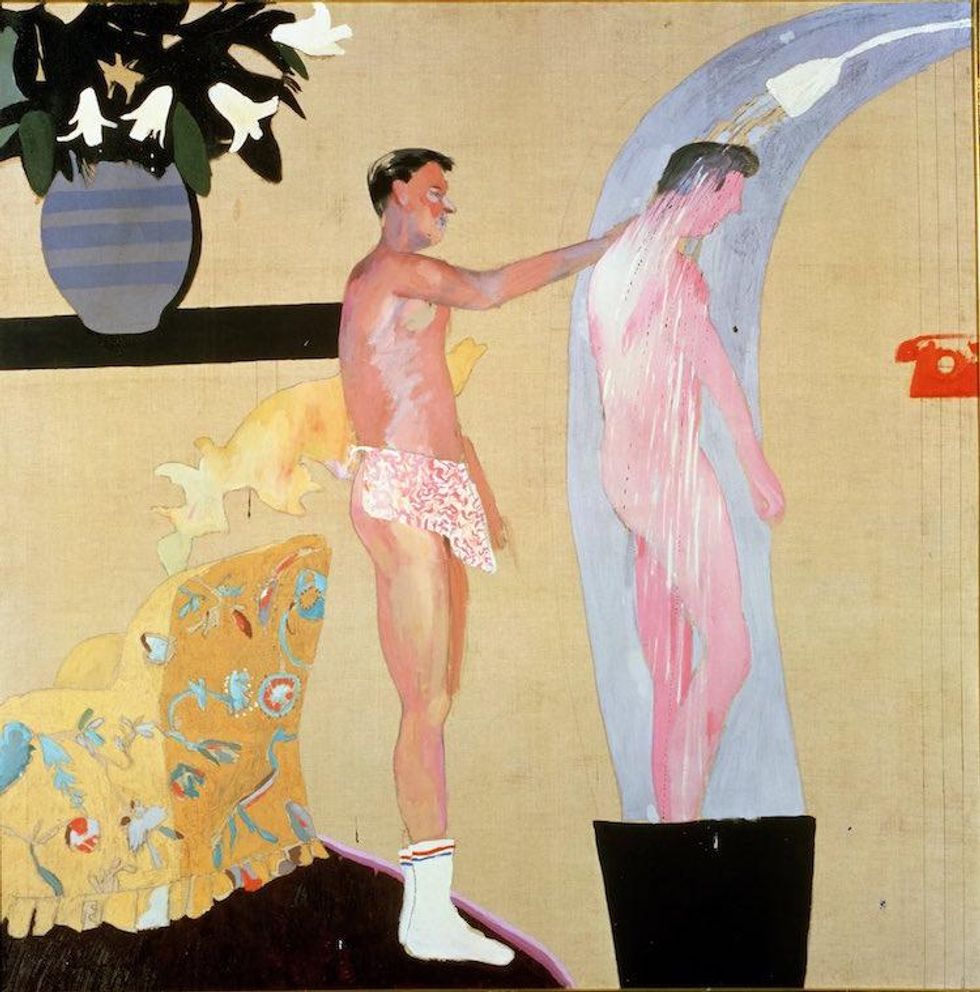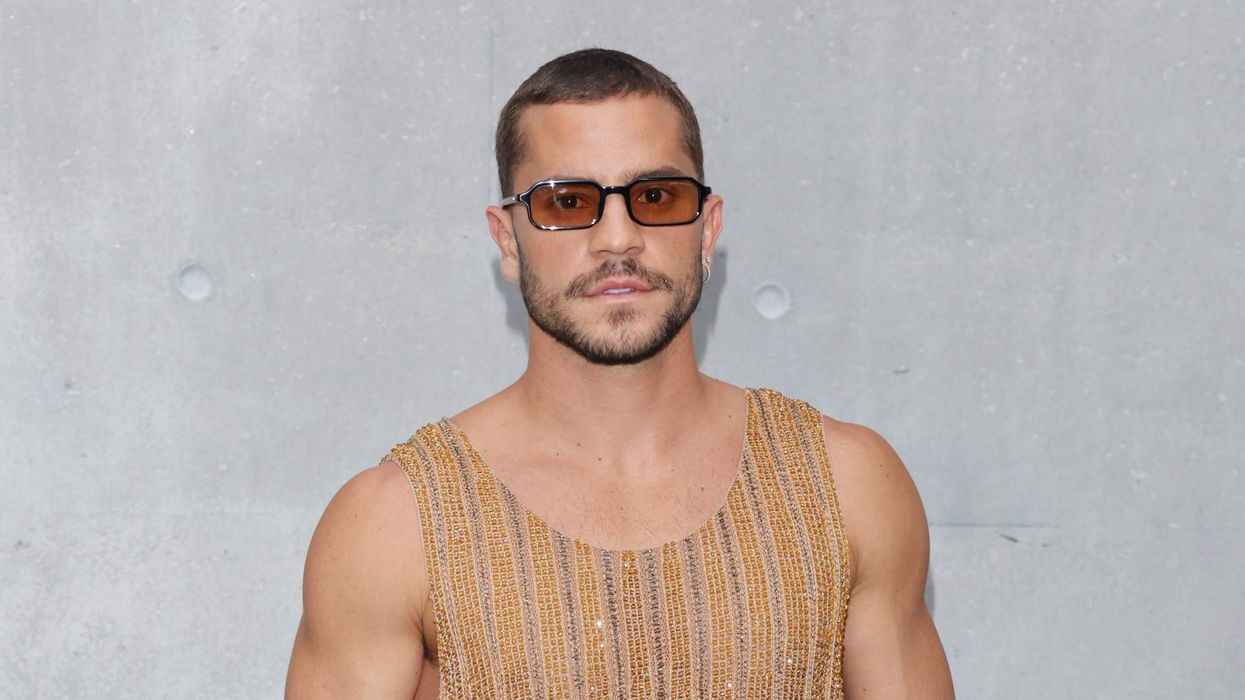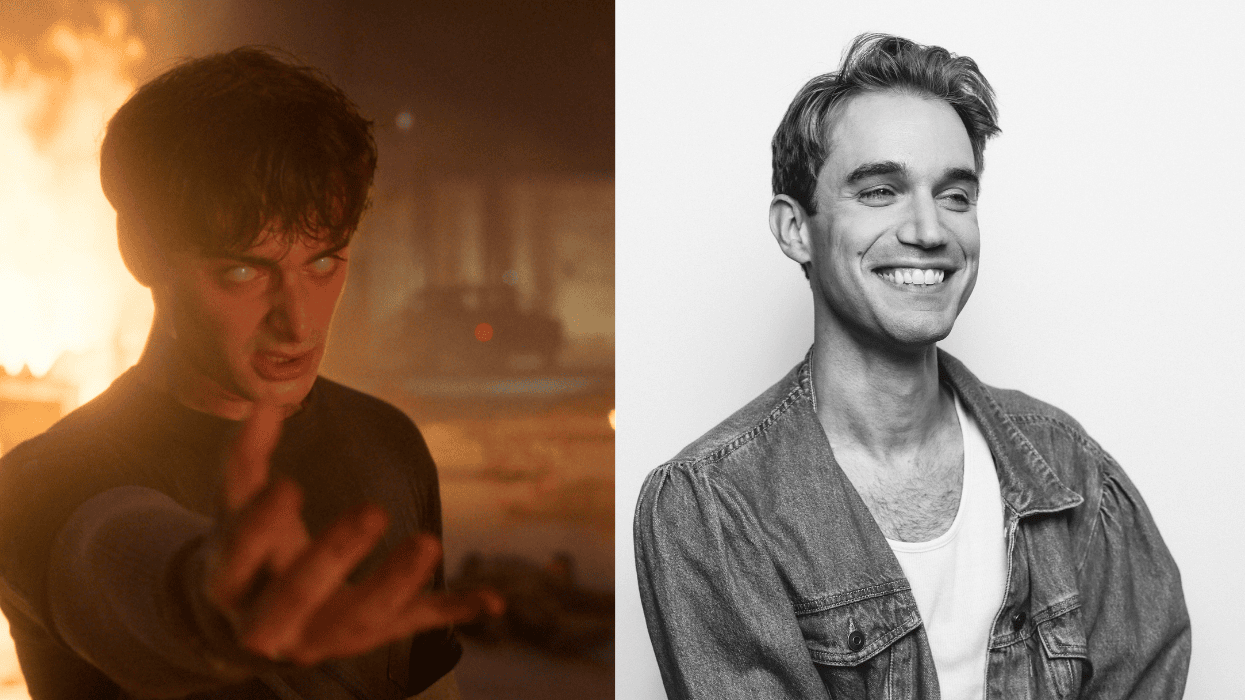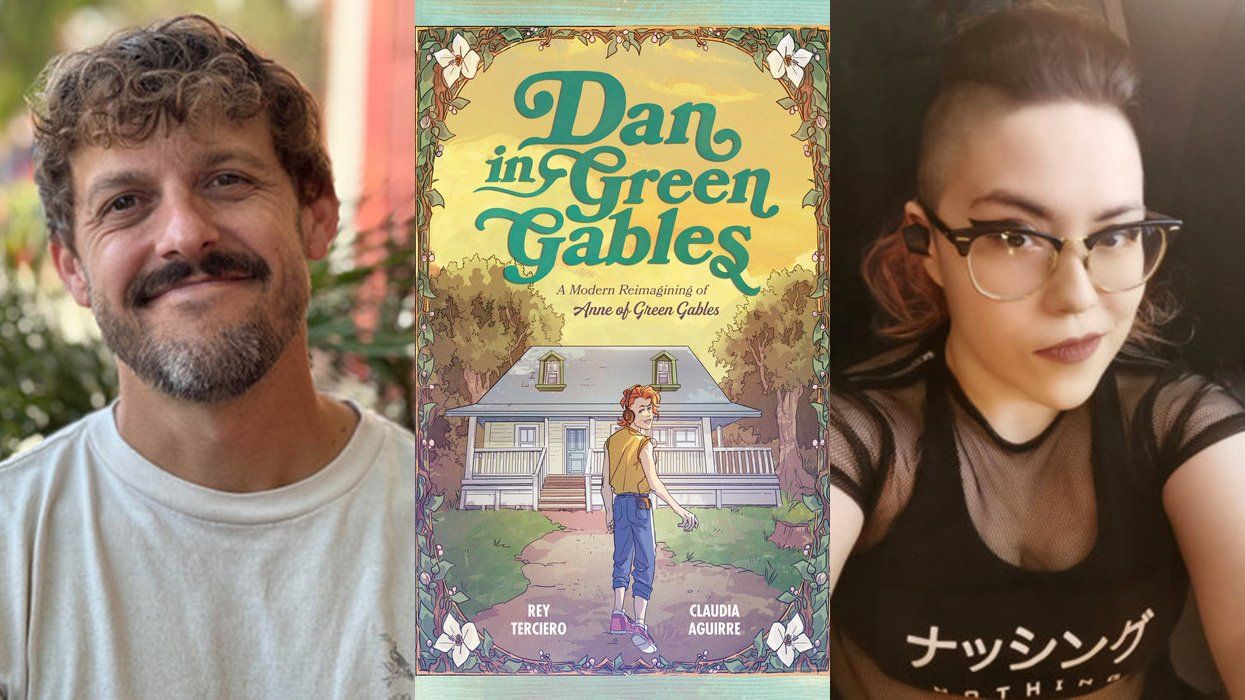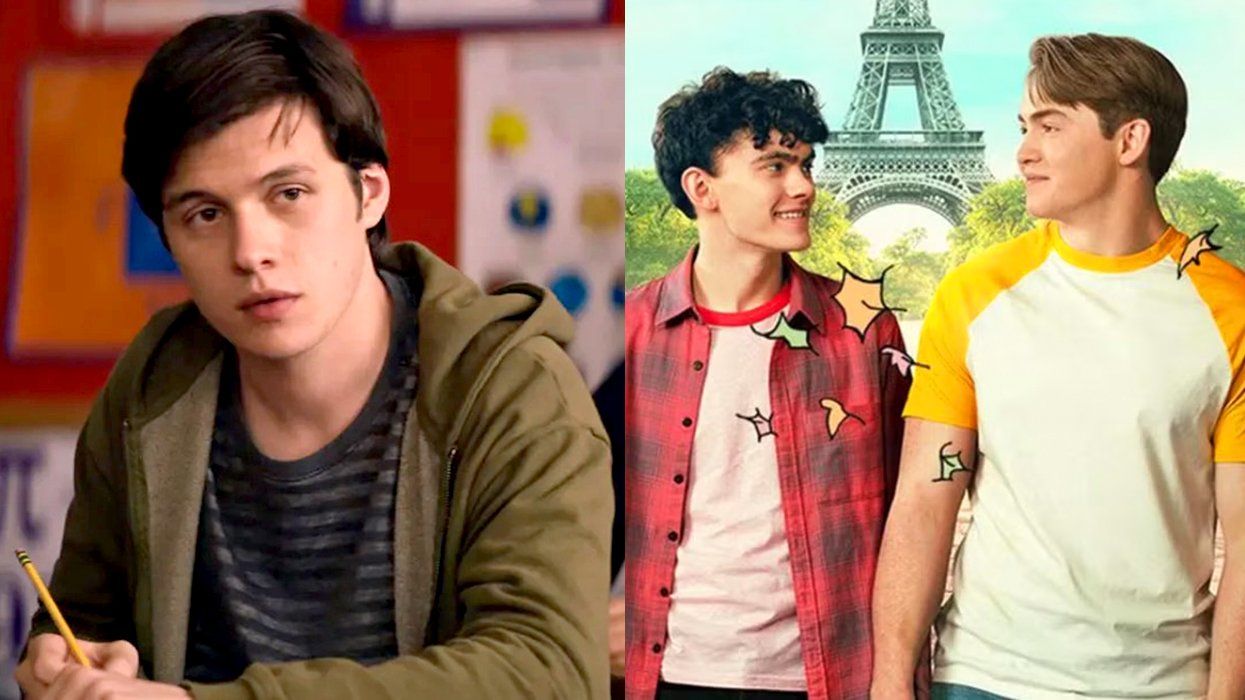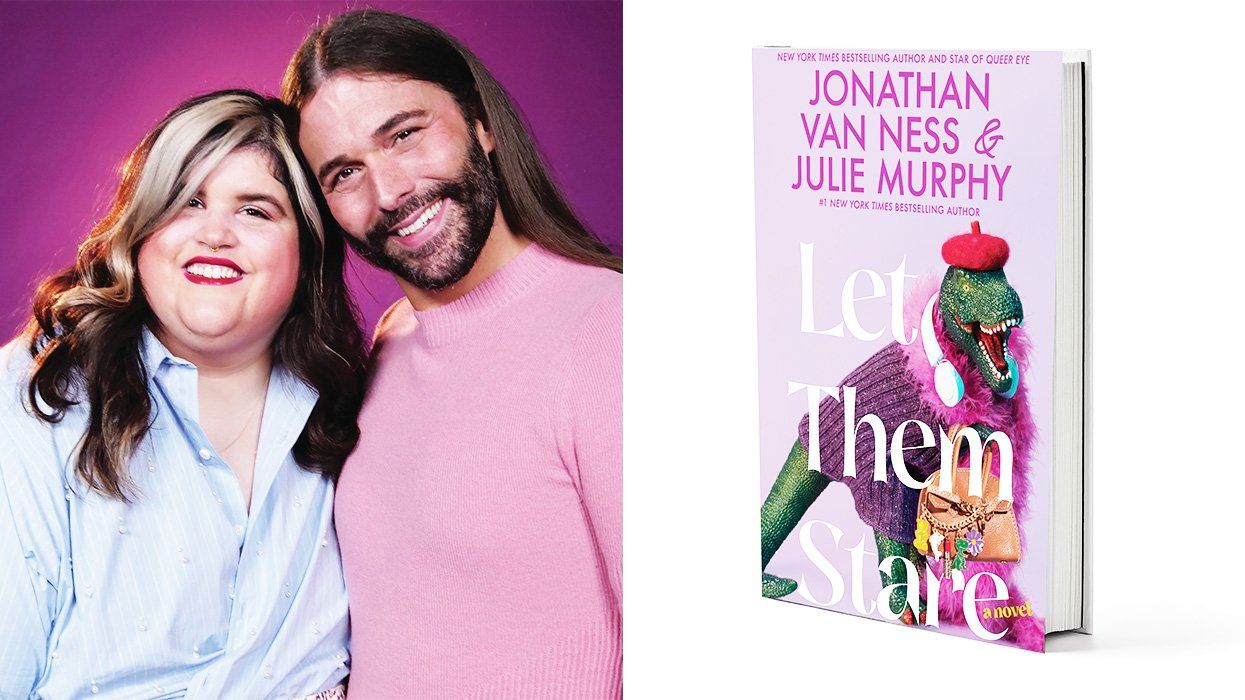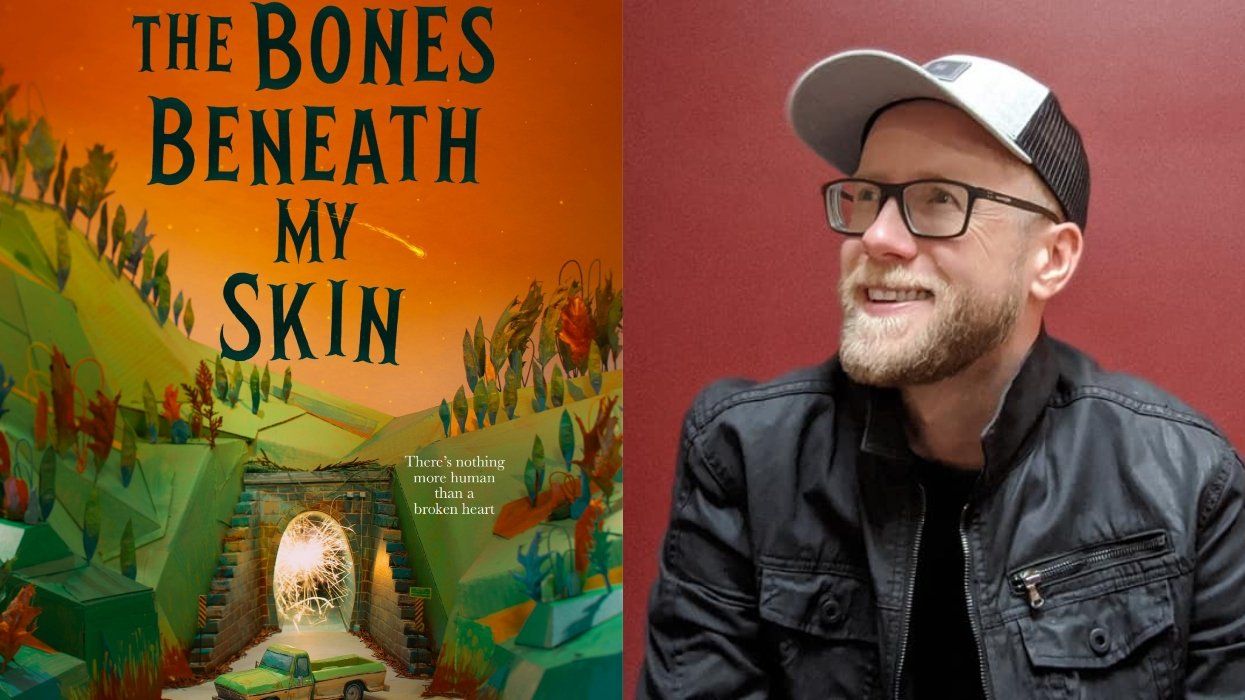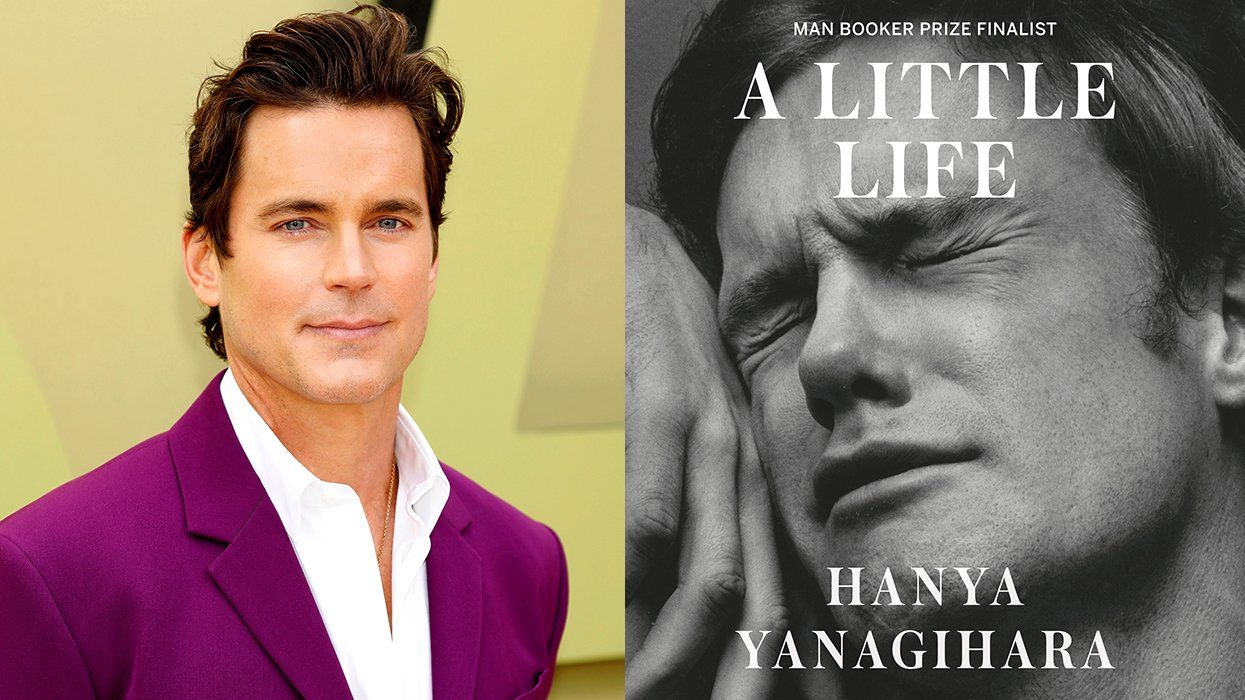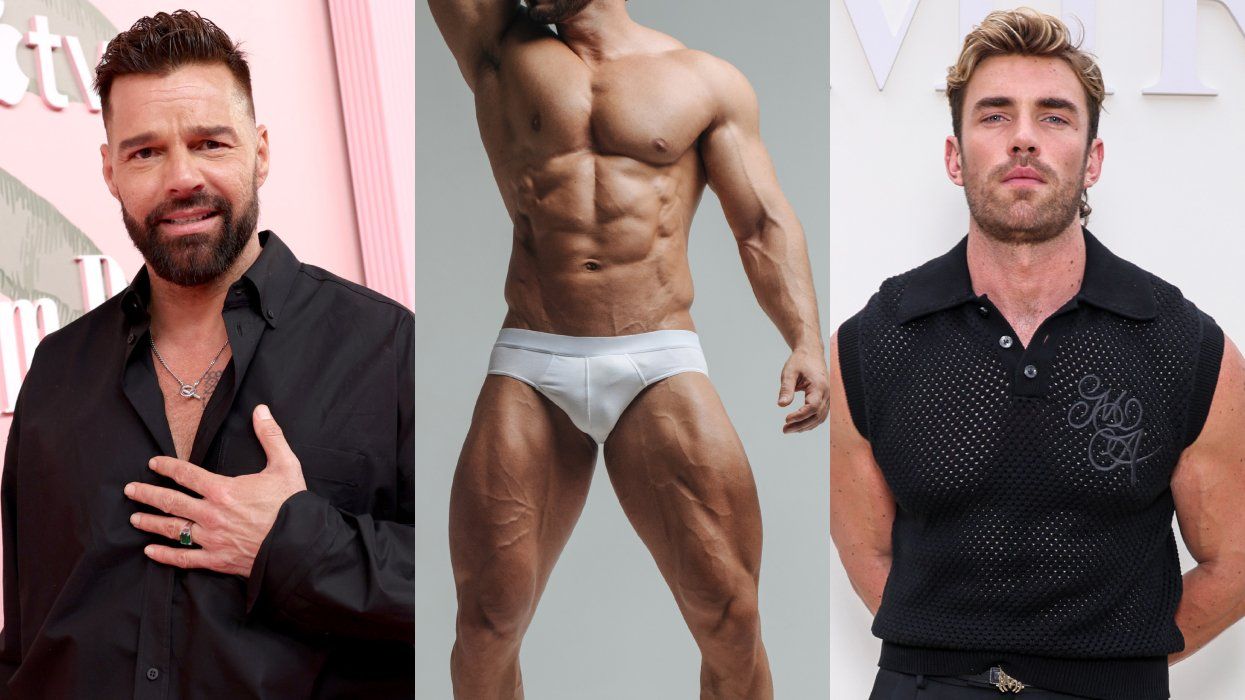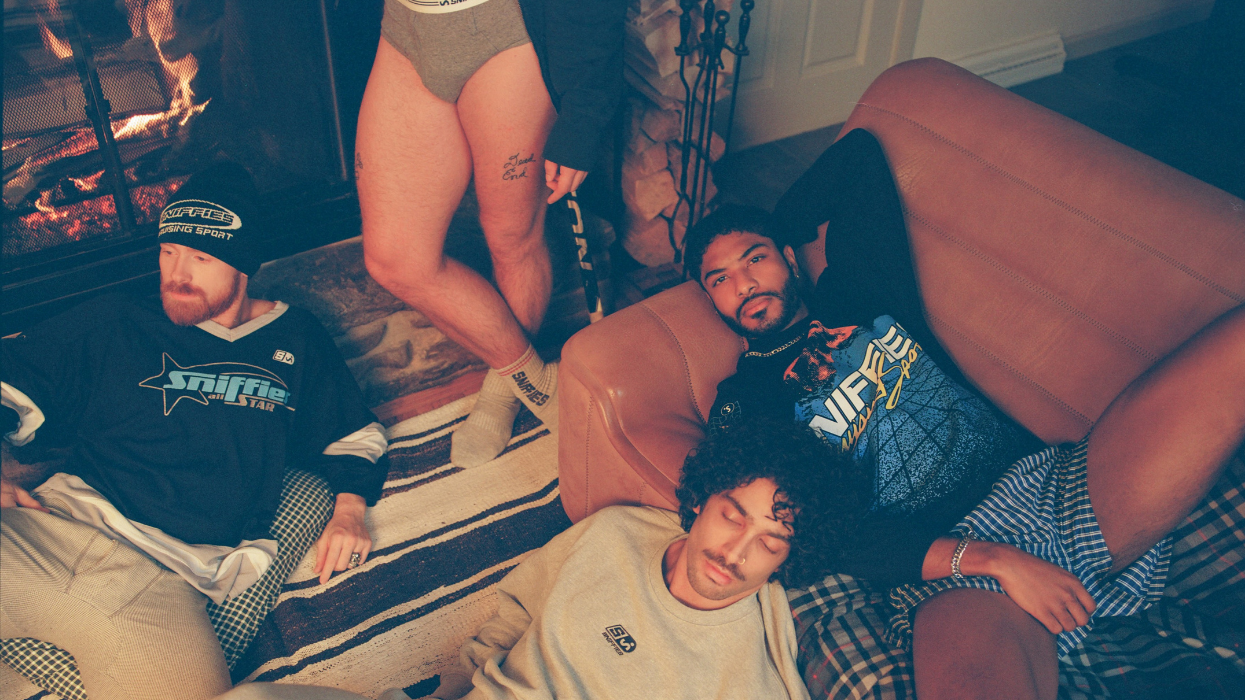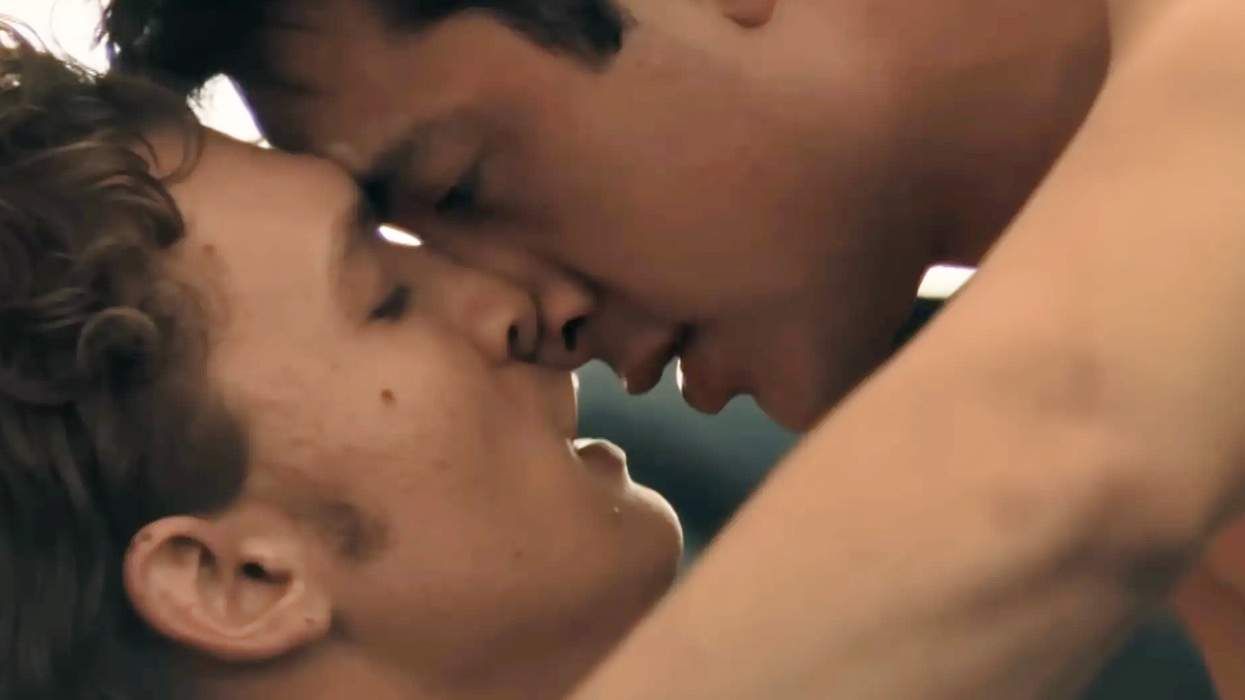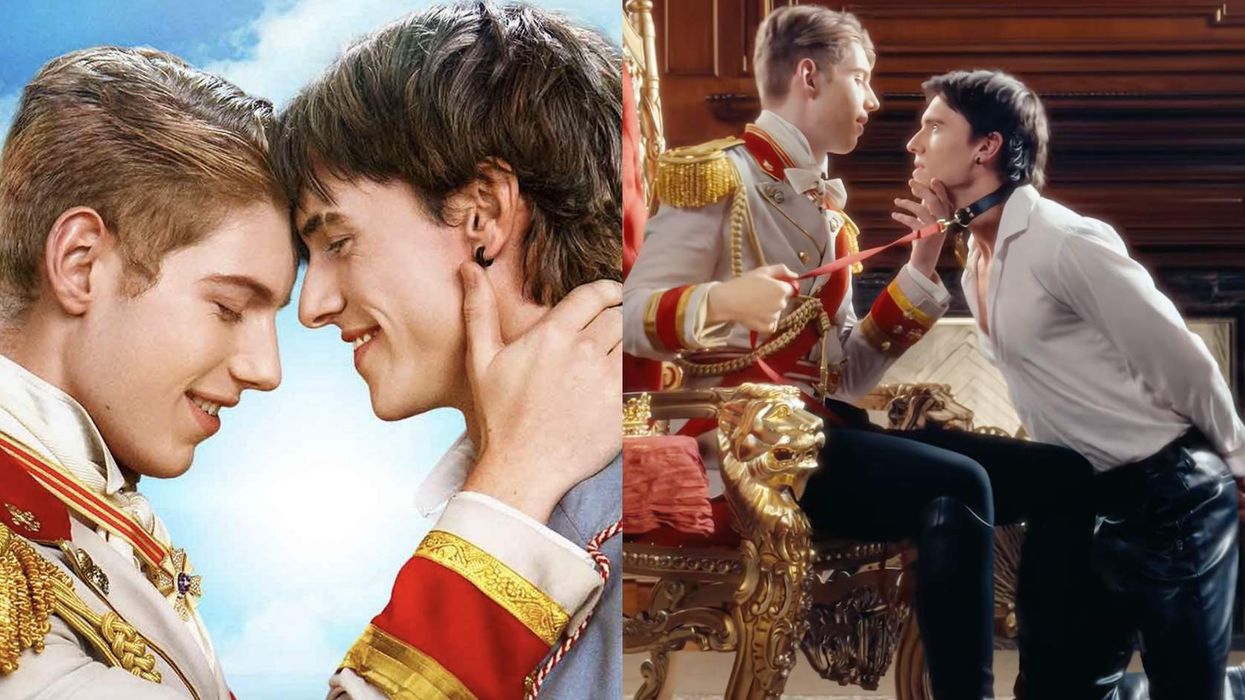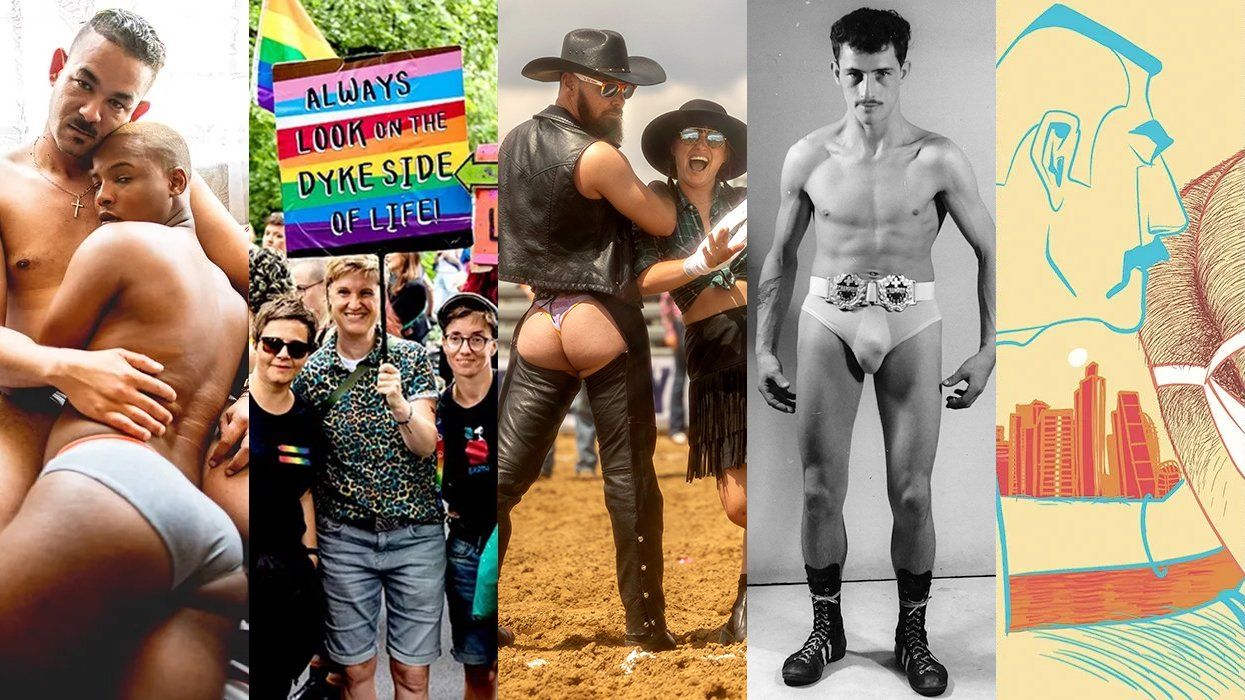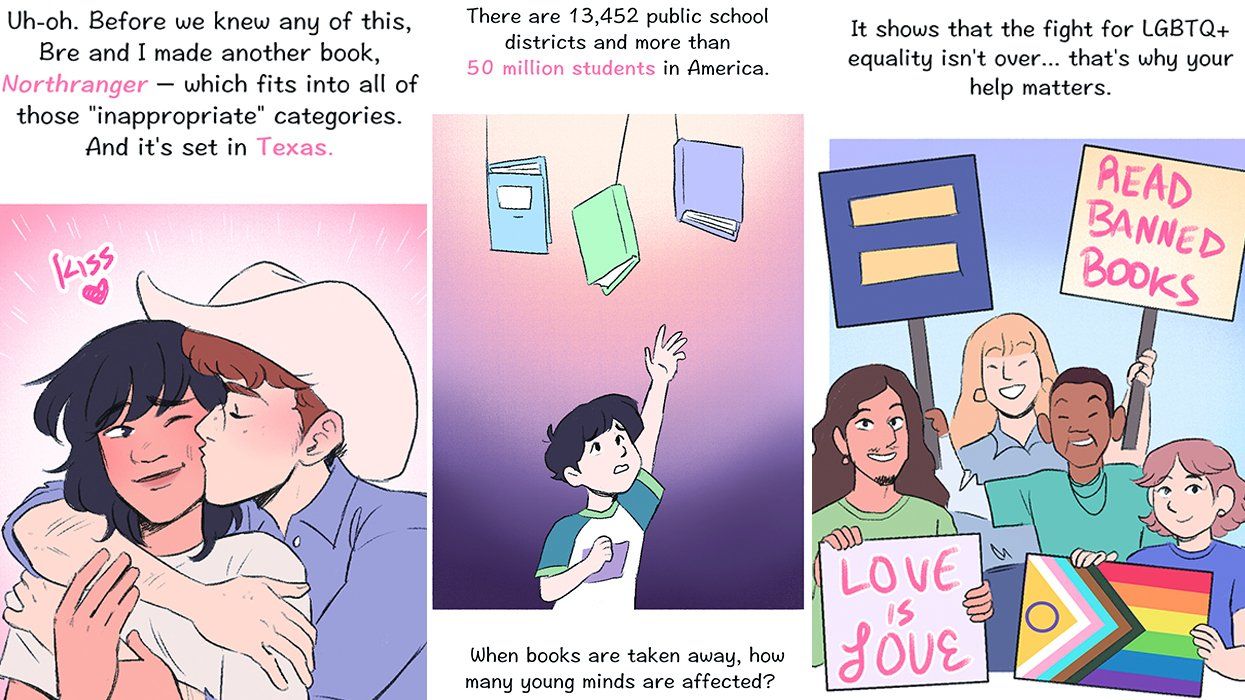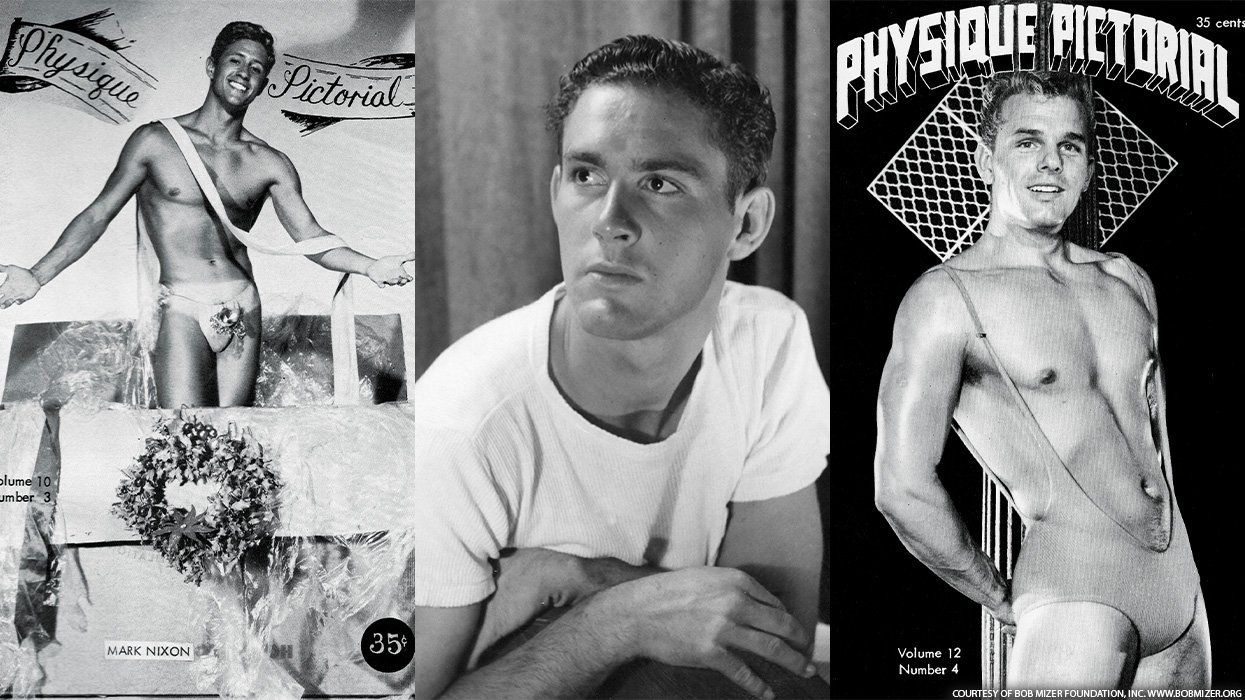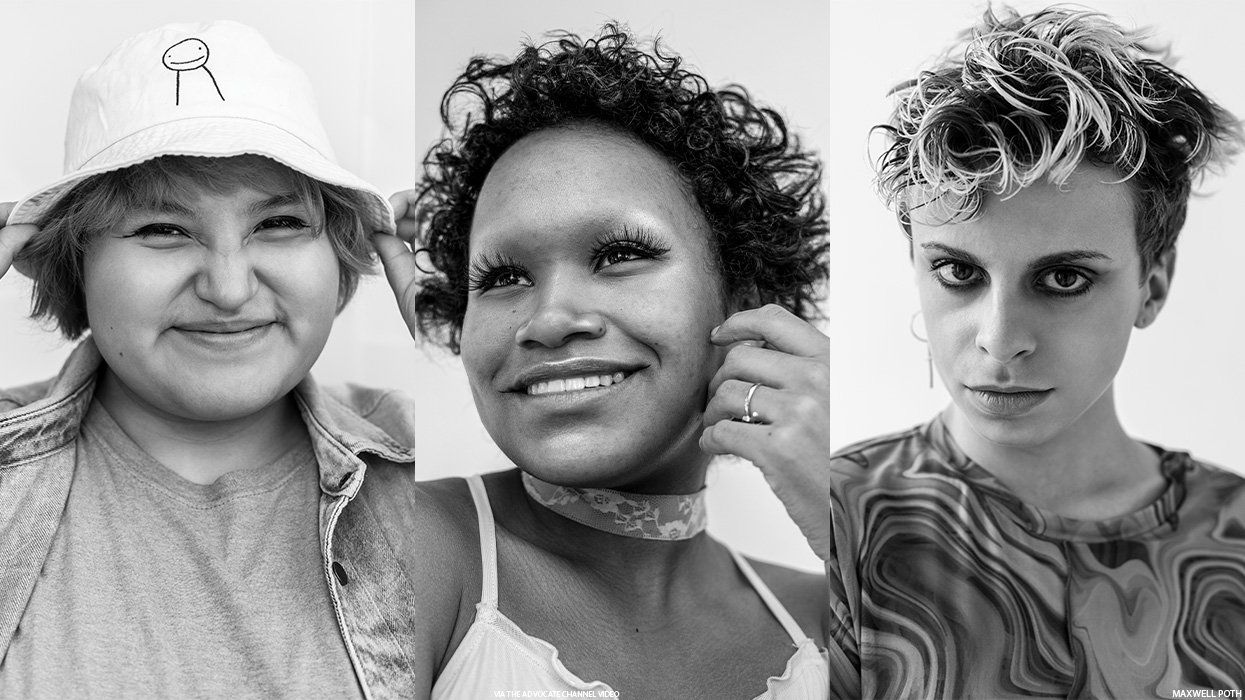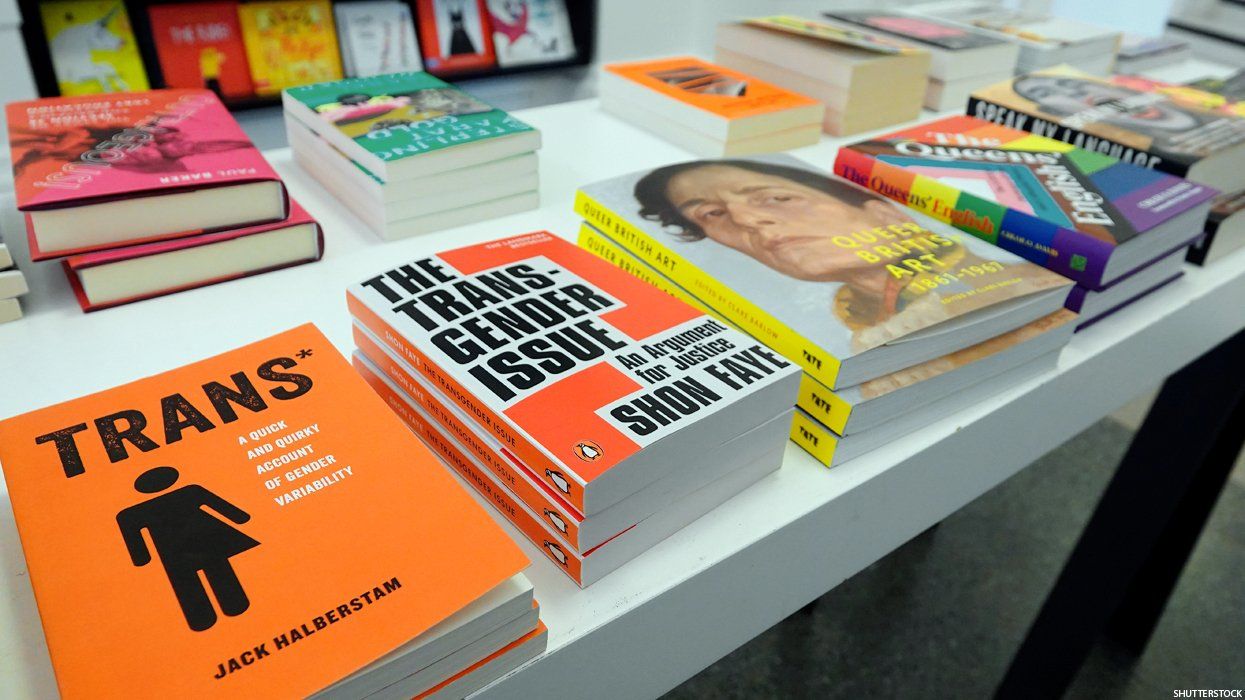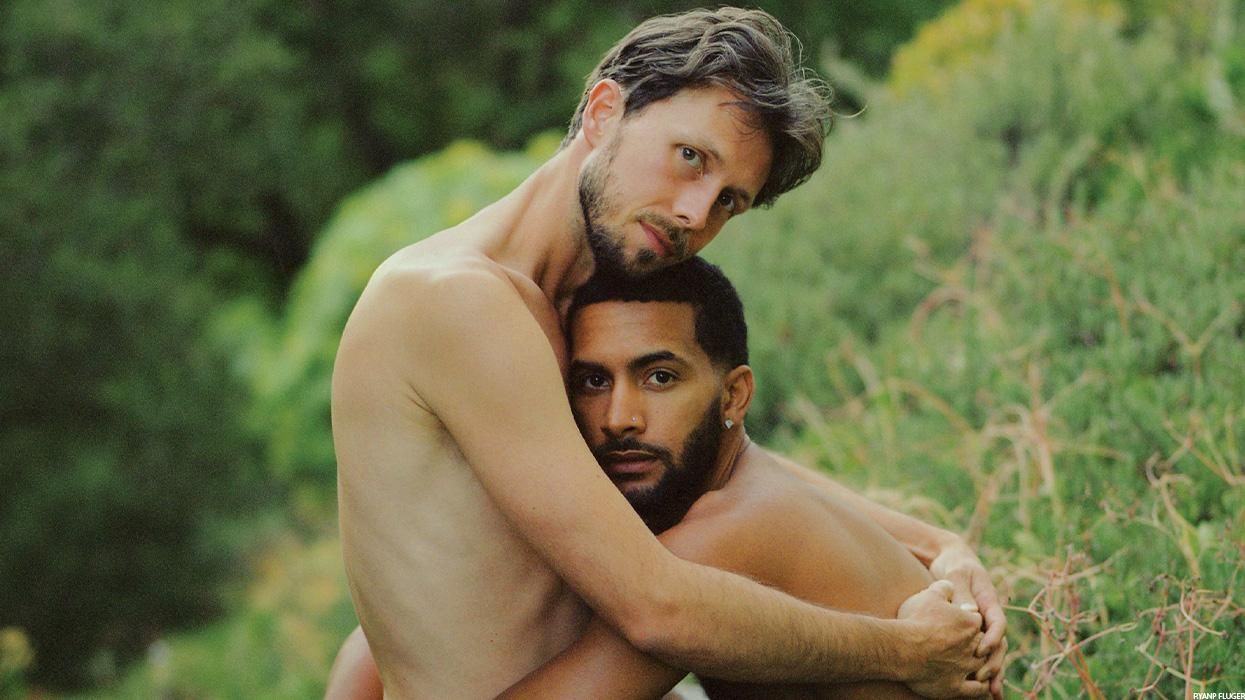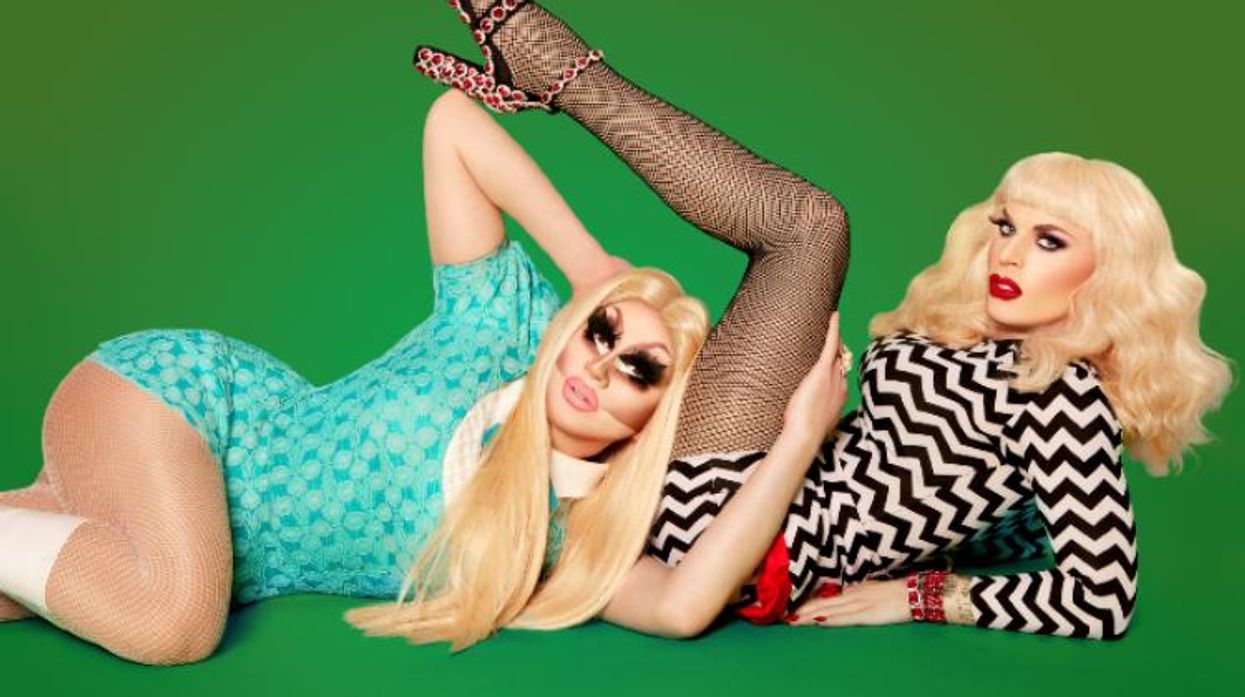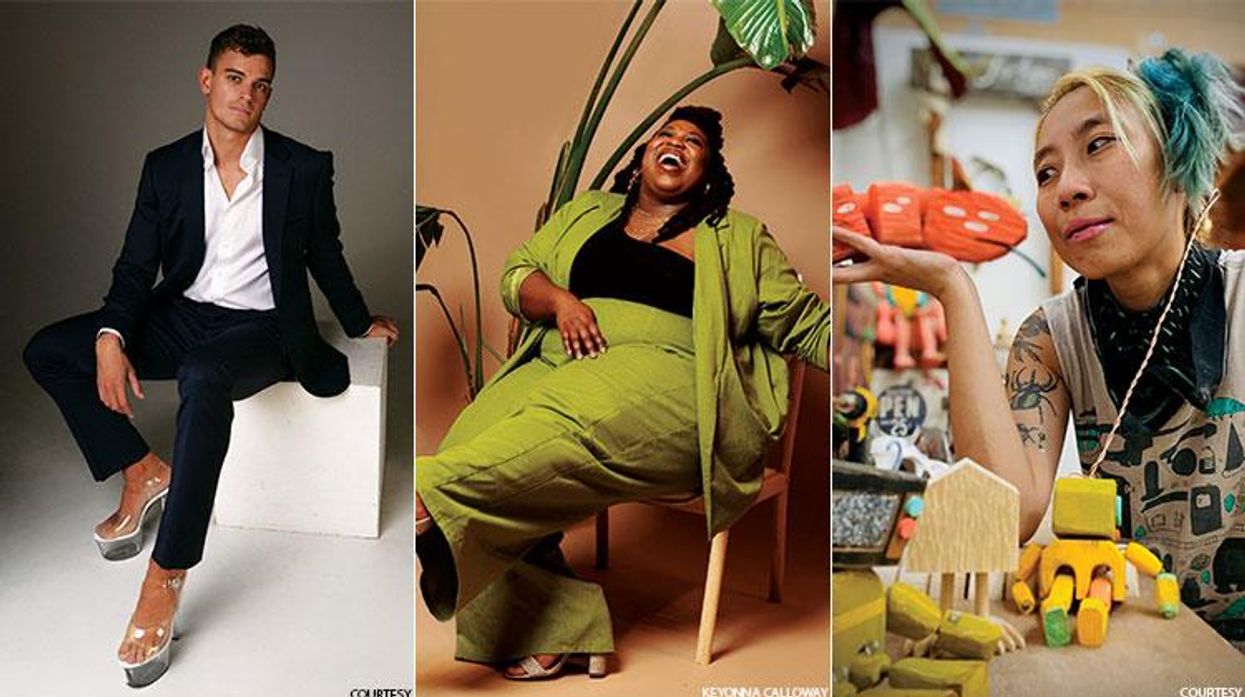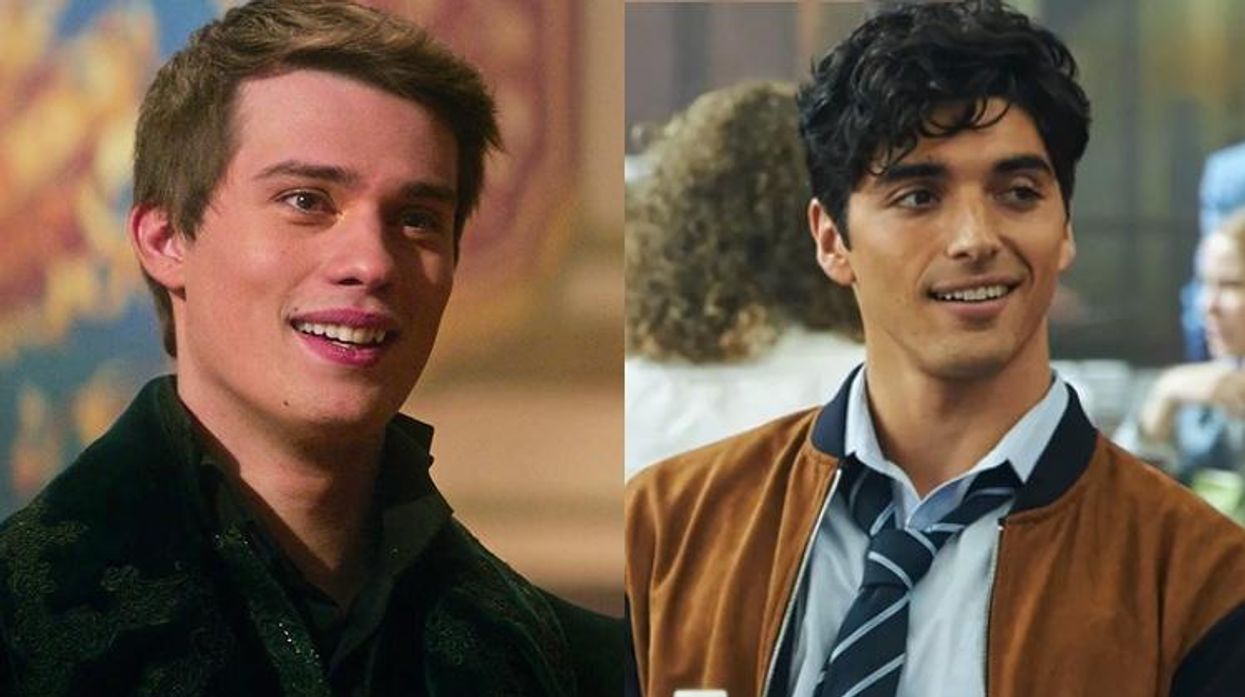The David Hockney you know lives in a sunshine-flooded pad in West Hollywood. His homoerotic dreamscapes capture the bounty of slender-bodied beach babes he encountered in 1960s California. The crisp geometry and hyper-flat perspectives of his eternally cool pool paintings draft a fantasy world where Hockney and his viewer can cavort with his often nude male subjects.
Related | Gallery: Six Decades of David Hockney
But these sexy, summery visions are just a sliver of Hockney's story. The queer octogenarian's career spans a 60-year creative evolution, from his rebellious days as a brutal abstractionist to his current explorations in digital art and animation.
As proof of this, the Metropolitan Museum of Art is presenting a survey of the British-born artist's work in an immense retrospective called "David Hockney" (because doesn't that title say enough?). This is the first time in a generation that Hockney's pieces have been so definitively showcased in North America, following two recent critically acclaimed exhibits overseas, at London's Tate Modern and Paris's Centre Pompidou.
This latest iteration coincides with Hockney's 80th birthday and the 50th anniversary of the decriminalization of sodomy in the United Kingdom. These milestones imbue it with a special significance, one the Met will commemorate by premiering exclusive new paintings the artist finished only seven months before opening day. Seeing his latest canvases, such as A Bigger Interior With Blue Terrace and Garden, helps contextualize his more recent and controversial forays into digital art while explaining his continued interest in experimenting with three dimensions on a two-dimensional plane.
Domestic Scene, 1963. (Artwork courtesy of David Hockney)
Yet Hockney's early paintings are still his deepest, and will no doubt resonate the most, even more than half a century after they were unveiled. The most consistent aspect of his imagery is its unabashed portrayal of queer love and desire, found in classics like We Two Boys Together Clinging (1961), Domestic Scene (1963), and Christopher Isherwood and Don Bachardy (1968).
"Hockney was tackling queer themes at a time when queerness was essentially illegal," says the exhibition's curator, Ian Alteveer. "But he's totally brave in his work, using everything from Walt Whitman to the graffiti he finds in bathroom stalls and the London Tube stations. He's not scared to talk about what he wants to talk about."
"David Hockney" runs November 27 through February 25 at New York's Metropolitan Museum of Art.



